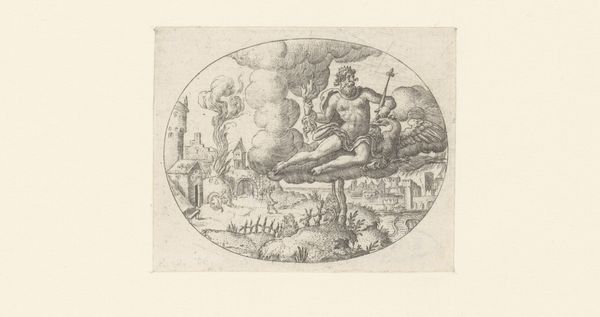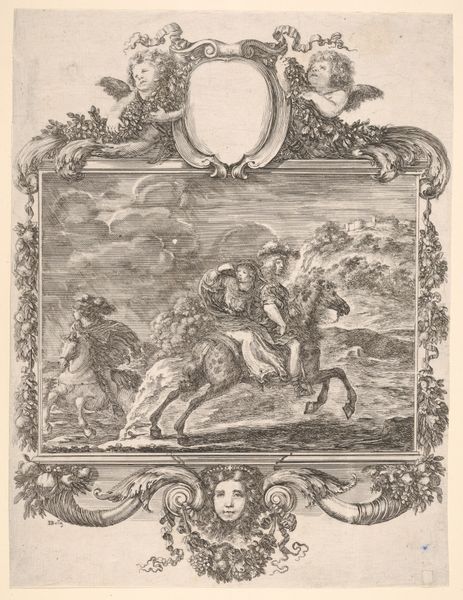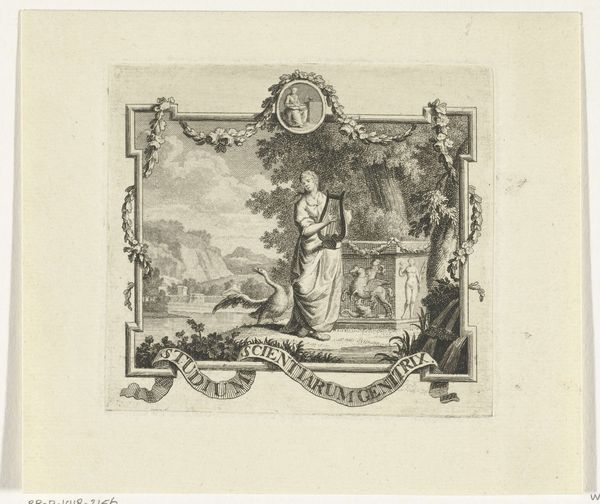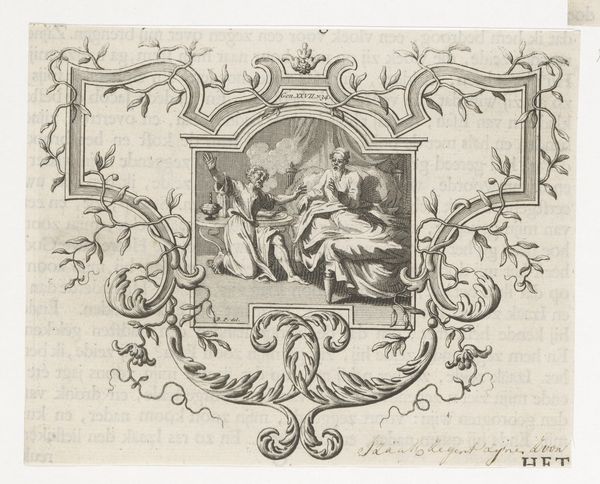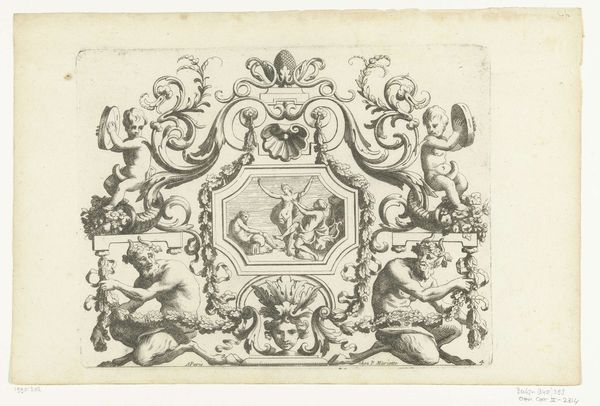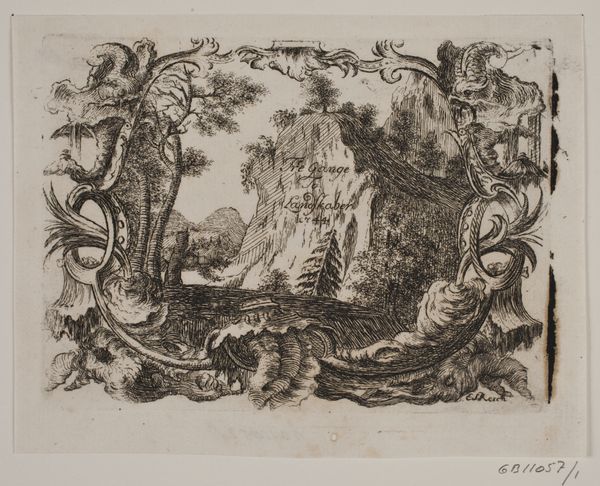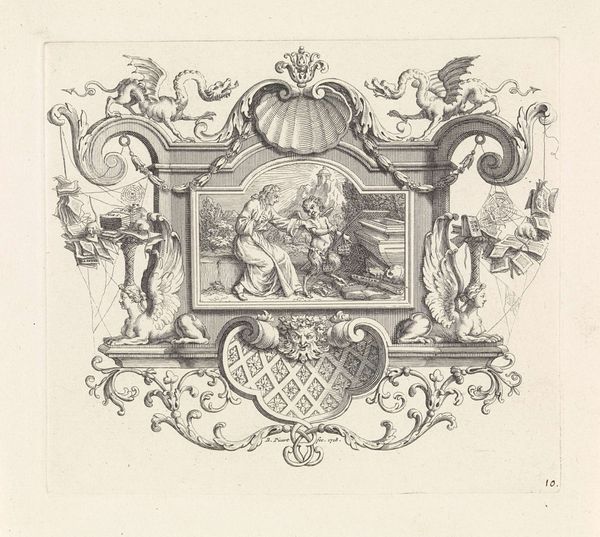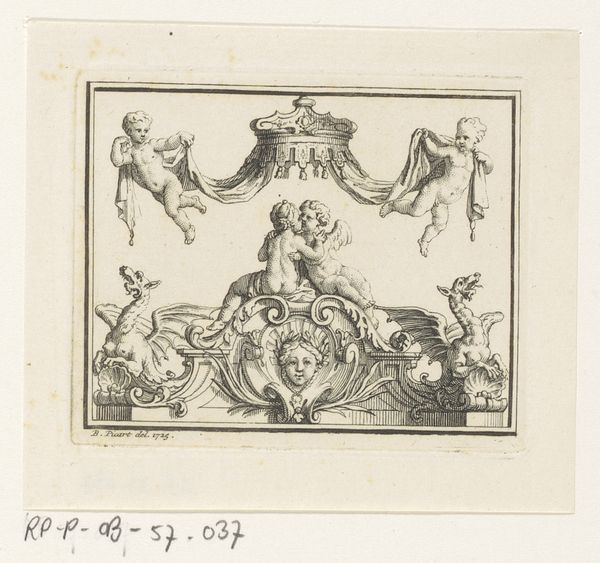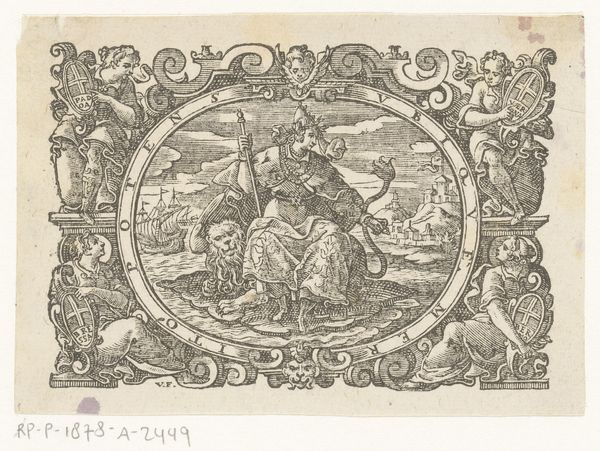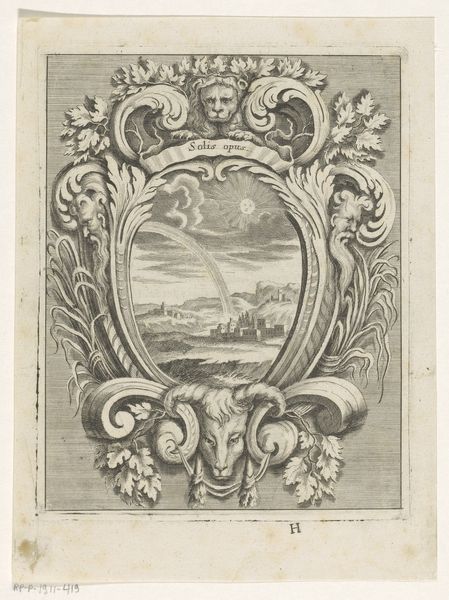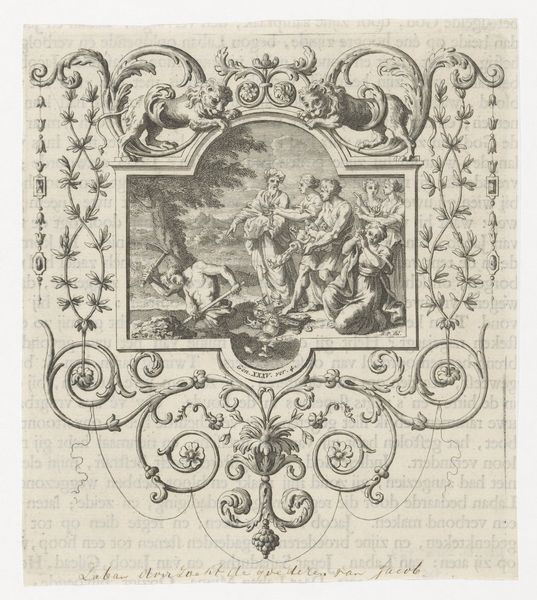
Man speelt op lier en zit op rug van dolfijn in kalme zee in omlijsting met ornamenten en gedoofde fakkels 1681 - 1746
0:00
0:00
francoisvanbleyswijck
Rijksmuseum
print, engraving
#
narrative-art
#
baroque
# print
#
landscape
#
figuration
#
engraving
Dimensions: height 98 mm, width 100 mm
Copyright: Rijks Museum: Open Domain
Curator: This engraving, created between 1681 and 1746 by François van Bleyswijck, depicts a man playing a lyre while riding a dolphin in a calm sea, all within an elaborate frame adorned with ornaments and extinguished torches. It resides here at the Rijksmuseum. Editor: The immediate impression is…theatrical. Everything, from the cherubic figures flanking the central image to the stylized smoke billowing from the cannons, points toward deliberate artifice and careful production. Curator: Indeed. Bleyswijck, working in printmaking, was crafting for a broad audience and a market hungry for allegorical and emblematic imagery. The engraving process itself allowed for multiple copies, facilitating wide dissemination. Editor: The figure on the dolphin clearly alludes to the Greek myth of Arion, a musician saved from drowning by a dolphin enchanted by his music. Notice how Bleyswijck positions the figure – he's the embodiment of harmony and control over nature’s chaotic forces. Curator: That’s astute. The material considerations further inform its meaning. Printmaking during this period wasn’t simply reproduction. It involved skilled labor, the management of matrices, the use of specific papers, and the socio-economic structure for its distribution. It was very costly and not accessible to everybody. Editor: Absolutely. The surrounding imagery deepens the symbolic layers. The extinguished torches often represented death or the end of an era, whilst cannons and a ship at sea hint at navigation, trade or even threat of conflict. The cherubs framing the picture convey contrasting statements of a "calm on the waves". It all speaks to the complexities of life, where art and skill bring harmony but are always vulnerable to darker forces. Curator: From a materialist point of view, the very survival of this print and its presence here today speaks to enduring systems of collecting, curation, and valuation. Editor: Quite so. Thinking of Bleyswijck's choices in depicting those classic iconographies, it invites me to wonder, what exactly was he hoping his 17th-century audience would infer?
Comments
No comments
Be the first to comment and join the conversation on the ultimate creative platform.

